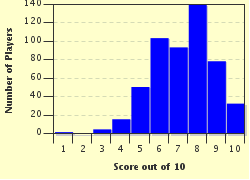Quiz Answer Key and Fun Facts
1. You might enjoy a panettone, stollen or heavy fruit cake over the silly season, but not everyone does. There's a country in which the Christmas cake is a light and airy sponge with fruit and cream in the centre, covered with whipped cream and topped with more fruit. The people of which country look forward to their Christmas sponge every year?
2. During some Portuguese Christmas dinners (called consoada), at least one extra place may be set around the table. Why?
3. Parents in Austria and the southern parts of Germany tell their children of a fiend who will take their presents away if they are naughty. His appearance varies but is something like the creature in this early greeting card. What is this villain's name?
4. Christmas celebrations in this country are partly centred on a set of religious buildings hewn from rock. Christmas sees the population of Lalibela more than double as pilgrims visit the complex at Christmas. In which country can you see the churches of Lalibela?
5. Christmas Eve sees many Finns lighting candles to honour their departed loved ones. Where are these candles displayed?
6. The shoes in the photo appear to be flying but in the Czech Republic on Christmas Eve shoes fly for a specific reason. Unmarried women throw a shoe at their house. If it lands with the toe facing the house, does this portend marriage in the coming year?
7. Mummers plays in England, Ireland and other places see performers acting out short plays, often in masks. In Latvia, mummers travel from house to house on Christmas Eve to sing songs and dance. This photo comes from England but what do Latvian mummers wear for their Christmas performances?
8. The mythological Kallikantzaroi (pictured) were a feature of Christmas for Greece and nearby nations, only appearing around Christmas time for two weeks. What is their purpose on the surface of Earth while they are here?
9. The Japanese have enjoyed a Christmas tradition since the 1970s even though only a small proportion of the population is Christian. They tuck into a 'Christmas dinner' from a particular fast food chain's menu. Which restaurant's food is the Japanese Christmas dinner of choice?
10. The witch in the photo is Befana. She is responsible for distributing gifts to lucky children in her native country. Which country's children are the recipients of Befana's largesse?
Source: Author
Tizzabelle
This quiz was reviewed by FunTrivia editor
gtho4 before going online.
Any errors found in FunTrivia content are routinely corrected through our feedback system.

